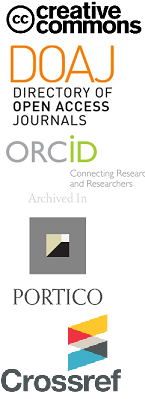Submissions
Submission Preparation Checklist
All submissions must meet the following requirements.
- I have read and understood author guidelines before uploading the manuscript.
- The submission file is in Microsoft Word document file format.
- I have used the typeface and point size of respectively Times New Roman and 12pt.
- Added continuous line numbering in the original manuscript in intervals of 5 lines.
- The text comply the bibliographic requirements outlined in the Author Guidelines, e.g. Harvard referencing style.
- The submission has not been previously published, nor is it before another journal for consideration (or an explanation has been provided in Comments to the Editor, in case it has been submitted elsewhere as conference paper).
- This is my/our own work, and all reasonable measures have been taken to acknowledge work by others and avoid plagiarism.
- Where applicable, URLs for the references have been provided, including DOIs, as part of the references.
- ORCID numbers have been provided under the author information section
- A list of four (4) proposed reviewers (affiliation + email) was gathered and will be added under Comments to the Editor during this submission process (in Step 1).
- If submitting to a peer-reviewed (Articles) section of the journal, the instructions to Ensure a Blind Review have been followed, i.e., no author names and their affiliations in the original manuscript.
Copyright Notice
Copyright remains with the author(s).
Publishing rights remain with the author(s)
All articles published in JESA can be re-used under the following CC license: CC BY-SA Creative Commons Attribution-ShareAlike 4.0 International License.
Privacy Statement
The names and email addresses entered in this journal site will be used exclusively for the stated purposes of this journal and will not be made available for any other purpose or to any other party. Personal data collected is dealt with in accordance with the South African POPI Act, South Africa's equivalent of the EU GDPR. Also view the Khulisa Journals Data Privacy Policy for more information.



.png)